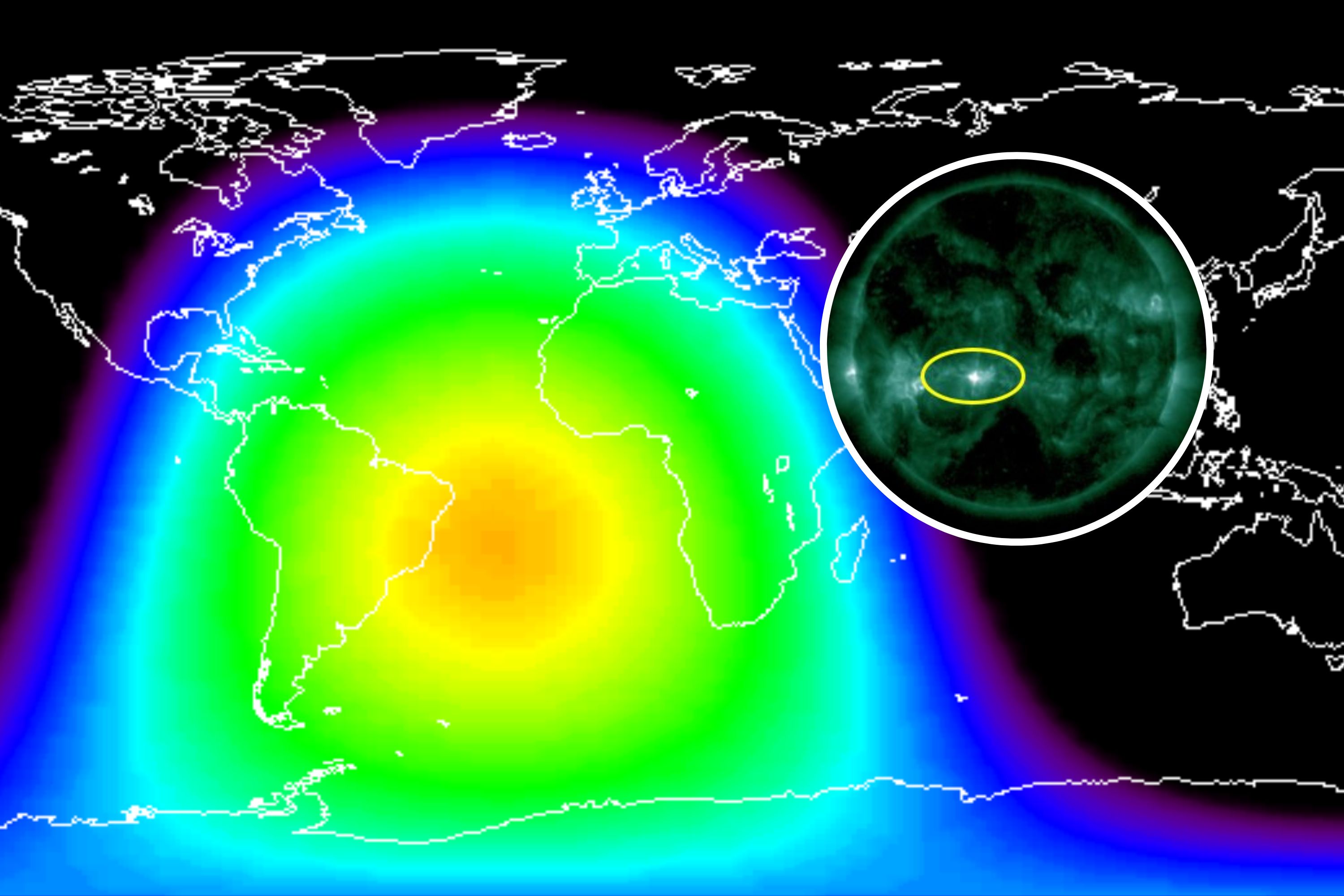Waves of solar flares keep pouring out of the sun, sparking “rolling” radio blackouts across the world.
Active sunspot regions on the sun’s surface are responsible for the flares, which are classified on a scale of A, B, C, M and X, with X-class being the most powerful and least common. The stronger ones trigger blackouts on the side of the Earth facing toward our star.
Since yesterday, a powerful X2.3-class flare caused radio blackouts across the Atlantic Ocean and South America, and several M-class flares also headed our way, causing weaker blackouts across Africa and the Indian Ocean.
Solar flares are bursts of X-ray and ultraviolet radiation from the sun’s surface, usually released from magnetically active regions such as sunspots. Flares are often accompanied by plumes of solar plasma known as coronal mass ejections (CMEs), however, flares arrive at the Earth within minutes while CMEs take several days to travel through space.
The most recent flares originated from a cluster of sunspots in the sun’s Southern Hemisphere, named AR3883 and AR3886, as well as a large sunspot named AR3889.

NOAA Space Weather Prediction Center
“Solar activity has been at high levels with ten M-Class flares and one X-Class flare. An impulsive X2.3/2b occurred at 06/1324 UTC originating from Region 3883,” NOAA’s Space Weather Prediction Center said in a forecast discussion.
“Solar activity is expected to be moderate with continued M-Class (R1-R2/Minor-Moderate) flaring and a chance for X-Class (R3-Strong) levels 07-09 Nov. Solar flare probabilities are being driven by Regions 3883 and 3886 due to their history and magnetic complexities.”
There is a 35 percent of X-class flares being seen today, tomorrow and on Saturday, while there is an 80 percent chance of M-class flares.
Each class of flare is ten times more powerful than the previous, and within the uncapped X-class, an X10 flare is ten times more powerful than an X1-class. M-class flares occur about 2,000 times per 11-year cycle, with X-class flares being seen about 175 times per cycle, and more powerful flares than X10-class are only seen eight times per cycle.
This solar cycle’s strongest flare so far was an X9.0-class flare seen on October 3 this year, breaking the record set by the X8.79 flare that occurred on May 14.
When a flare reaches our atmosphere, it ionizes a layer known as the ionosphere. Usually, the ionosphere reflects radio waves, allowing signals to be bounced long distances around the world. However, when this layer is ionized, it absorbs frequencies below 30 MHz, leading to shortwave radio blackouts.
Martin Connors, a professor of space science and physics at Canada’s Athabasca University, told Newsweek: “X-rays coming from the Sun [break] down atoms in the upper atmosphere, which is a good thing since we do not get X-rays at ground level.
“However our protection does mean that the upper atmosphere becomes reflective or absorptive of radio signals (like when you drive onto a metal framed bridge and radio cuts out). Unlike your car radio this affects mostly bands that are used in air communication.”
This usually only occurs on the side of the Earth facing toward the sun at the time of the flare, and may impact military, aviation, maritime, and emergency communication systems.
GPS signals can also be degraded, which can affect navigation accuracy for airlines, ships, and ground transportation systems, sometimes forcing aircraft to avoid polar routes, which are more exposed to solar activity.
Do you have a tip on a science story that Newsweek should be covering? Do you have a question about solar flares? Let us know via science@newsweek.com.
(Except for the headline, this story has not been edited by PostX News and is published from a syndicated feed.)

